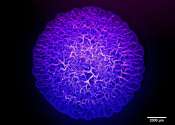One step closer to artificial rhino eggs
To prevent the extinction of the northern white rhino, the international consortium BioRescue is attempting to create artificial egg cells from stem cells. A team led by MDC's Sebastian Diecke and Micha Drukker of Leiden ...









